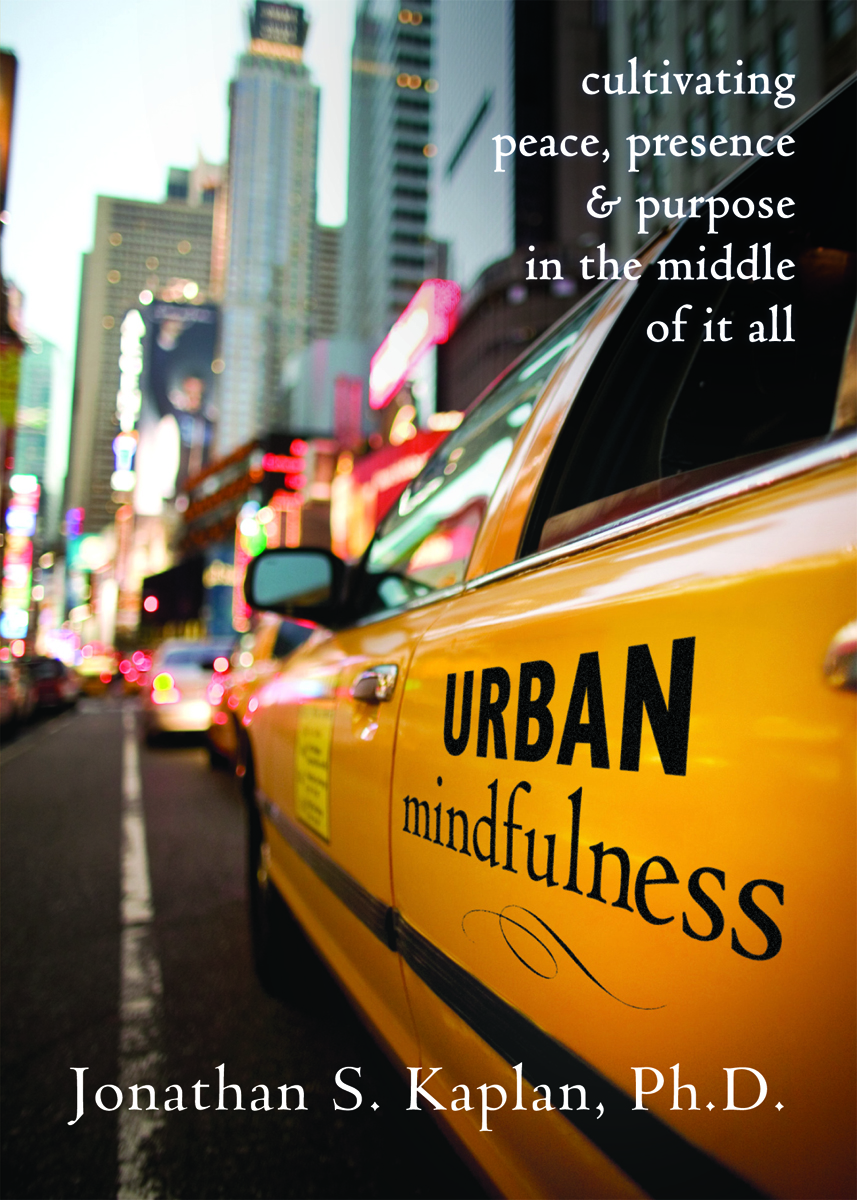Sunday
Dec132009
Get a Plant, You'll Feel Better
 Sunday, December 13, 2009 at 10:22PM
Sunday, December 13, 2009 at 10:22PM
By Jonathan Kaplan, Ph.D.
Here is a re-post of one of the most popular entries from my blog on Psychology Today. (Yes, Urban Mindfulness has a blog on PT (with different content)! Click here to check it out: PT blog.) Hope you enjoy the re-post!
Recently, an article in Miller-McCune caught my attention. It mentioned several research studies related to the positive impact of nature on the human condition. Having plants, going for a walk in the park, or even looking at a landscape poster could produce psychological benefits, reduce stress, and improve concentration. Click here for the Miller-McCune article: Nature is Good.
So, I decided to take a closer look at the research and see what might be helpful relative to our often stressful experience of living and working in the city. Though it is not related to mindfulness, this topic seemed interesting and particularly timely as we start moving from the lazy days of summer into more serious work mode.
Plants in Your Space
Based on several experimental studies, the presence of potted plants has been found to be helpful in many different settings including work, school, and hospitals. In particular, plants have been shown to...
Not bad, huh?! Feeling good around plants is probably not surprising. After all, we surround ourselves with plants during celebrations and tragedies (i.e., weddings and funerals, respectively). We also set aside “sacred” green space for parks and community gardens in our cities and communities.
Limitations of the Research
Before we get ahead of ourselves and start replacing the carpet with trays of wheat grass, it’s important to know one major limitation of the research. Most of the studies on the effects of houseplants have compared the presence of plants to their absence. While this is the epitome of a well-designed experiment, there might be other factors associated with the presence of plants--but not the plants themselves--that account for the more favorable results. For example, the improvement could be due to distraction, novelty, caring for something, perceived control, or improved air quality. Thus, we might get similar results under different circumstances, such as replacing the plants with a dartboard, photos, Sea Monkeys, or an air purifier. So, it’s important to keep in mind that other additions to your space might also be helpful.
What house plants were used in these studies?
Several different species of plants have been included in these studies. Based on my examination of the research, a few plants seem to be used more consistently, including:
Other plants have included the following:
(Personally, I was happy to find that some plants didn’t make the list, like ferns and those ficus trees. It’s not that they can’t be helpful: I just can’t seem to grow them!)
Take-home Message
Relative to a barren environment, the research suggests that having plants around you is a good thing for your health and productivity. So, if you’re feeling stressed or inefficient at work, get a plant. You might just feel better.
Gratitude
I’d like to give a “Tip of the Hat” to Drs. Seong-Hyun Park and Richard Mattson from the Department of Horticulture, Forestry, and Recreation Resources at Kansas State University. They’ve been quite helpful in providing reprints and answering my naive questions in preparation for writing this post. Also, I’d like to thank the website, Plants for People (it’s not as cheezy as it sounds). With offices in 3 European countries, Plants for People is an “international initiative, spreading knowledge about the benefits of plants in a working environment.” The site provides abstracts and full-length research articles, which I reviewed for this post. Click here for the site: Plants for People.
Here is a re-post of one of the most popular entries from my blog on Psychology Today. (Yes, Urban Mindfulness has a blog on PT (with different content)! Click here to check it out: PT blog.) Hope you enjoy the re-post!
Recently, an article in Miller-McCune caught my attention. It mentioned several research studies related to the positive impact of nature on the human condition. Having plants, going for a walk in the park, or even looking at a landscape poster could produce psychological benefits, reduce stress, and improve concentration. Click here for the Miller-McCune article: Nature is Good.
So, I decided to take a closer look at the research and see what might be helpful relative to our often stressful experience of living and working in the city. Though it is not related to mindfulness, this topic seemed interesting and particularly timely as we start moving from the lazy days of summer into more serious work mode.
Plants in Your Space
Based on several experimental studies, the presence of potted plants has been found to be helpful in many different settings including work, school, and hospitals. In particular, plants have been shown to...
- lower blood pressure (systolic)
- improve reaction times
- improve attentiveness
- improve attendance (at work and school)
- improve productivity (at work)
- improve well-being
- improve perceptions of the space
- lower levels of anxiety during recovery from surgery
- better job satisfaction
Not bad, huh?! Feeling good around plants is probably not surprising. After all, we surround ourselves with plants during celebrations and tragedies (i.e., weddings and funerals, respectively). We also set aside “sacred” green space for parks and community gardens in our cities and communities.
Limitations of the Research
Before we get ahead of ourselves and start replacing the carpet with trays of wheat grass, it’s important to know one major limitation of the research. Most of the studies on the effects of houseplants have compared the presence of plants to their absence. While this is the epitome of a well-designed experiment, there might be other factors associated with the presence of plants--but not the plants themselves--that account for the more favorable results. For example, the improvement could be due to distraction, novelty, caring for something, perceived control, or improved air quality. Thus, we might get similar results under different circumstances, such as replacing the plants with a dartboard, photos, Sea Monkeys, or an air purifier. So, it’s important to keep in mind that other additions to your space might also be helpful.
What house plants were used in these studies?
Several different species of plants have been included in these studies. Based on my examination of the research, a few plants seem to be used more consistently, including:
- Golden Pothos (Epipremnum aureum)
- Arrowhead Vine (Syngonium podophyllum)
- Chinese evergreen (Aglaonema sp.)
Other plants have included the following:
- Dracaena (various)
- Philodendron
- Snake plants (Sansevieria trifasciata)
- Peace Lilly (spathiphyllum starlight)
- Vinca Vines
(Personally, I was happy to find that some plants didn’t make the list, like ferns and those ficus trees. It’s not that they can’t be helpful: I just can’t seem to grow them!)
Take-home Message
Relative to a barren environment, the research suggests that having plants around you is a good thing for your health and productivity. So, if you’re feeling stressed or inefficient at work, get a plant. You might just feel better.
Gratitude
I’d like to give a “Tip of the Hat” to Drs. Seong-Hyun Park and Richard Mattson from the Department of Horticulture, Forestry, and Recreation Resources at Kansas State University. They’ve been quite helpful in providing reprints and answering my naive questions in preparation for writing this post. Also, I’d like to thank the website, Plants for People (it’s not as cheezy as it sounds). With offices in 3 European countries, Plants for People is an “international initiative, spreading knowledge about the benefits of plants in a working environment.” The site provides abstracts and full-length research articles, which I reviewed for this post. Click here for the site: Plants for People.
tagged  plants,
plants,  research,
research,  stress relief
stress relief
 plants,
plants,  research,
research,  stress relief
stress relief 


